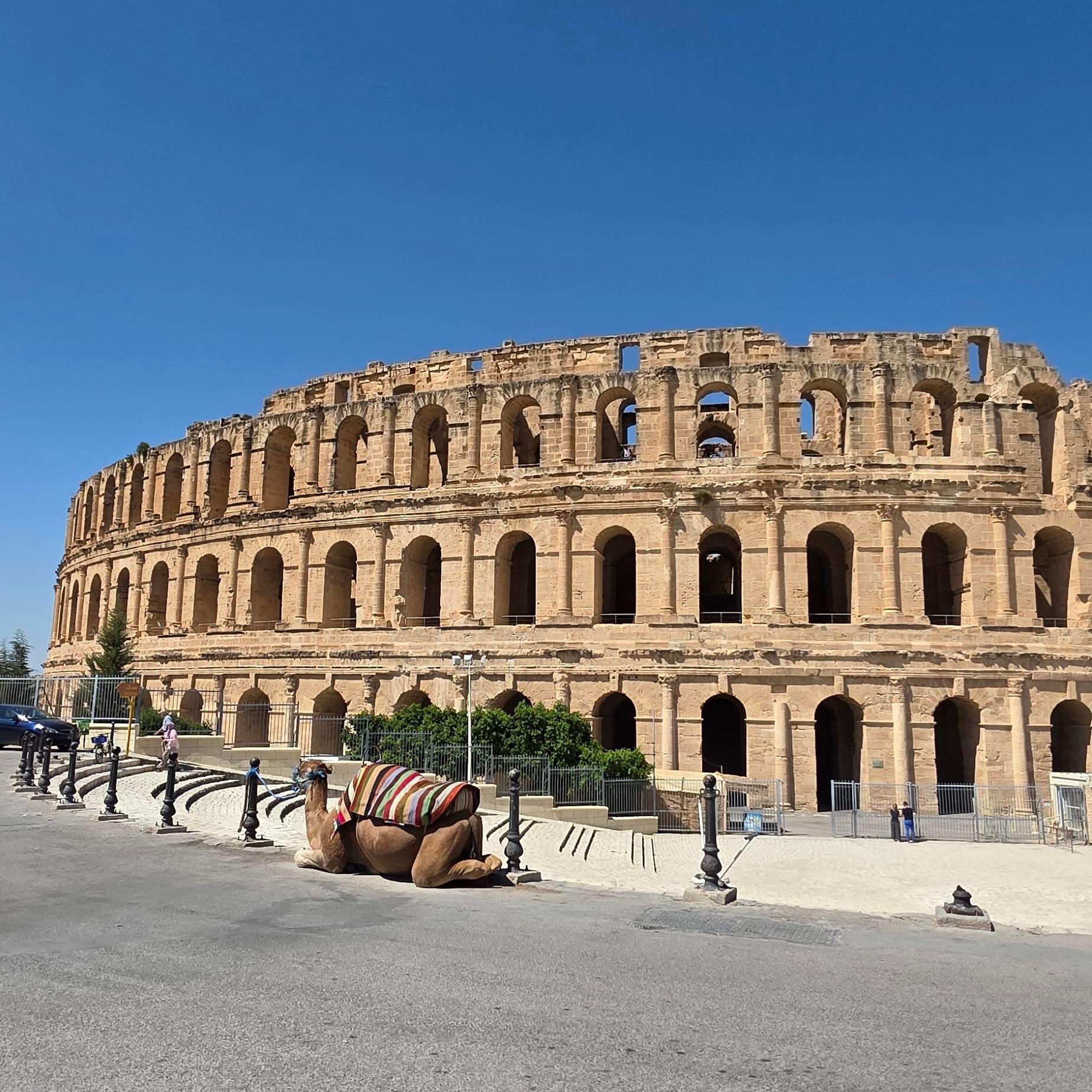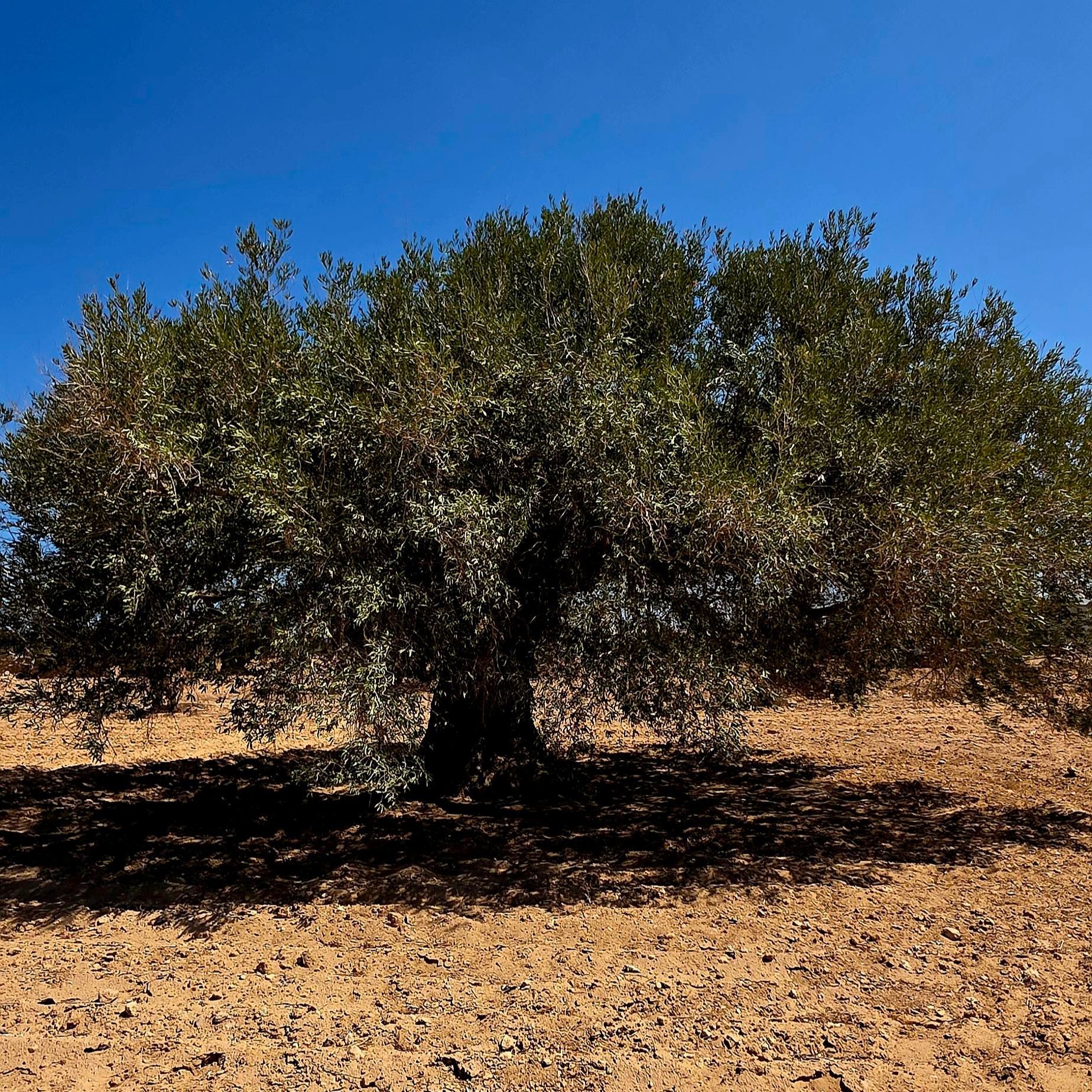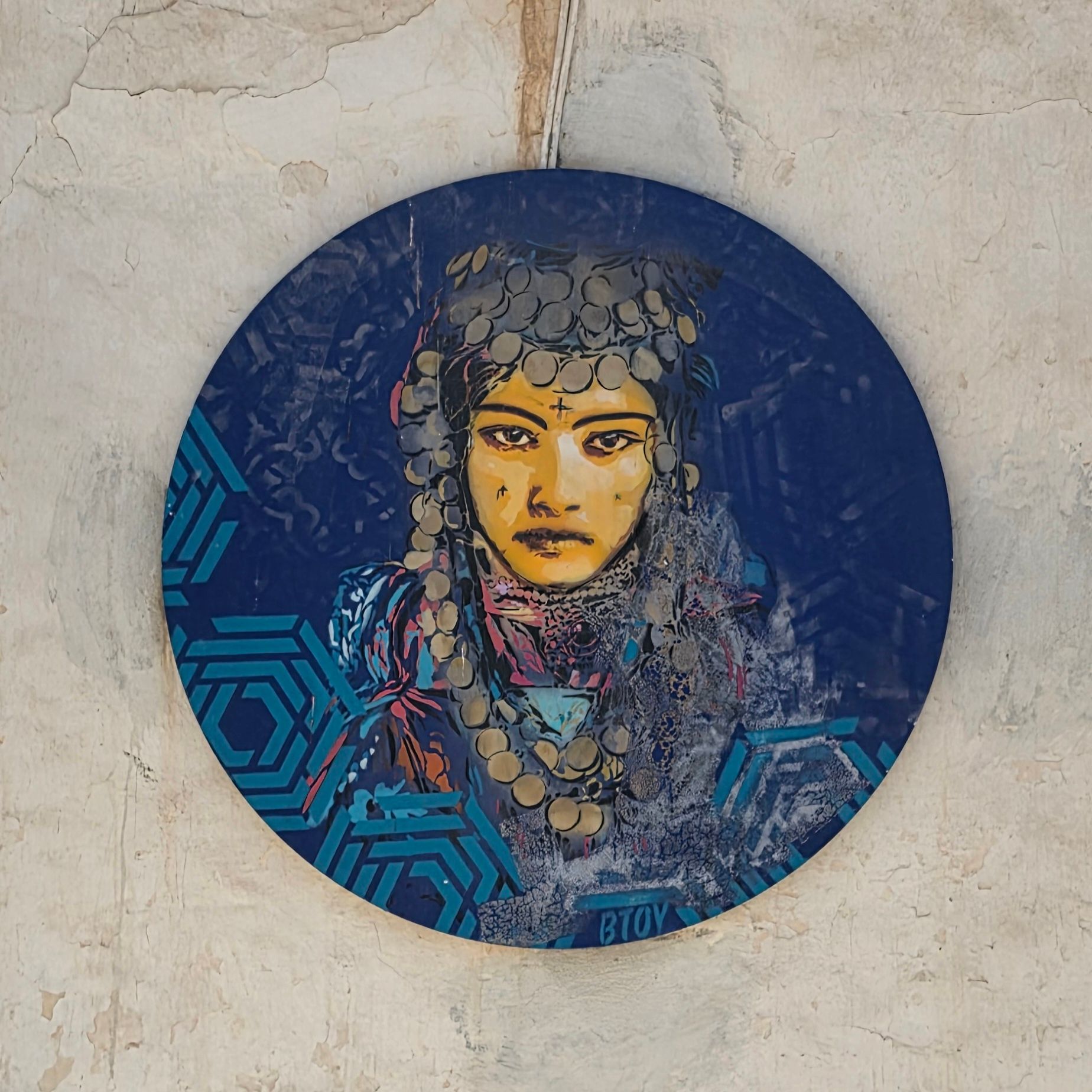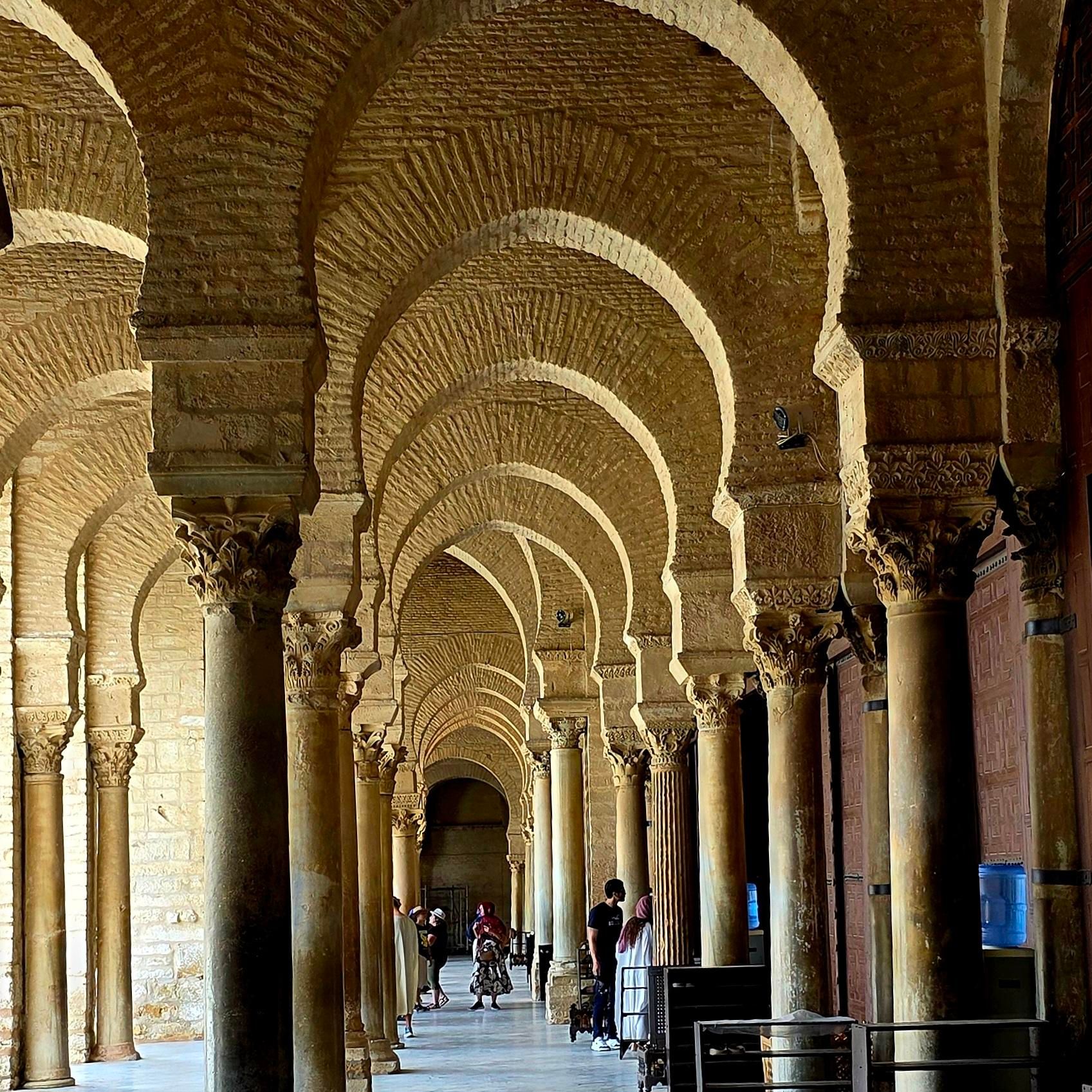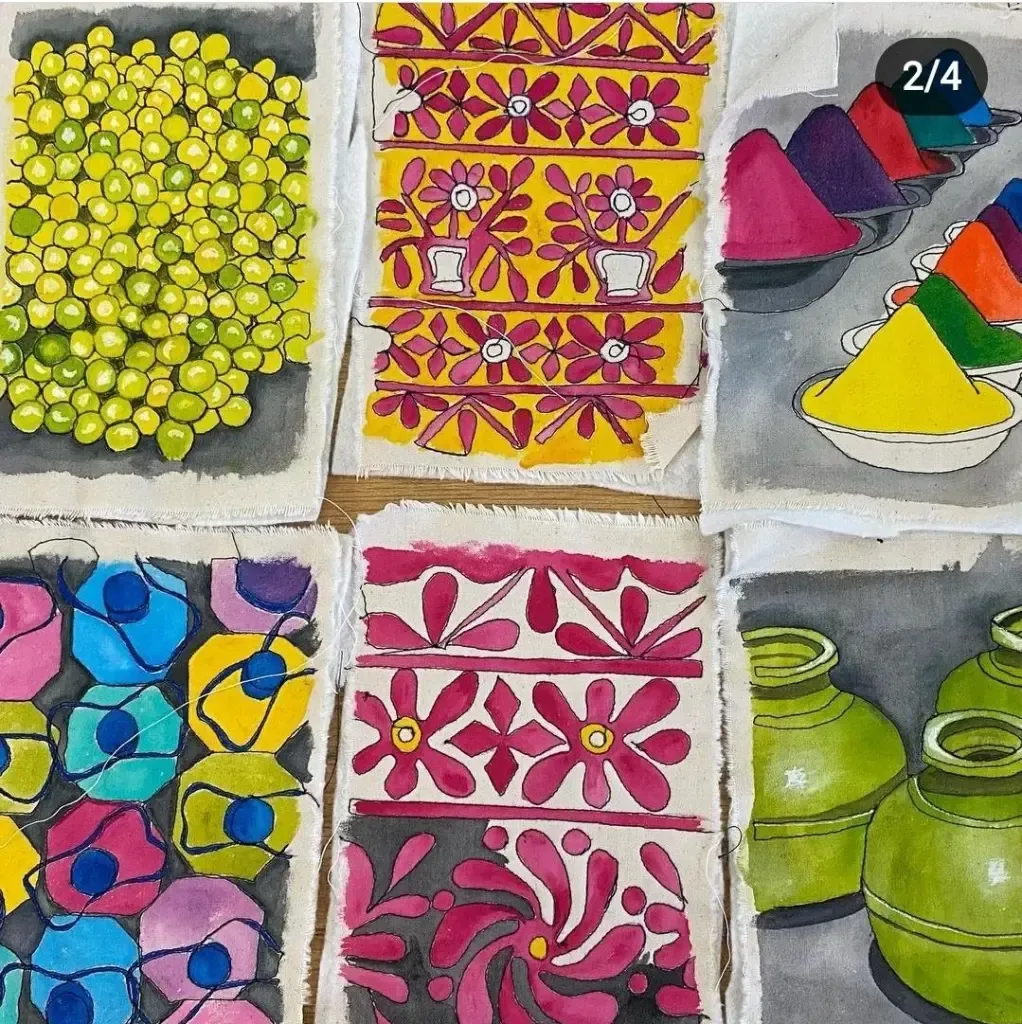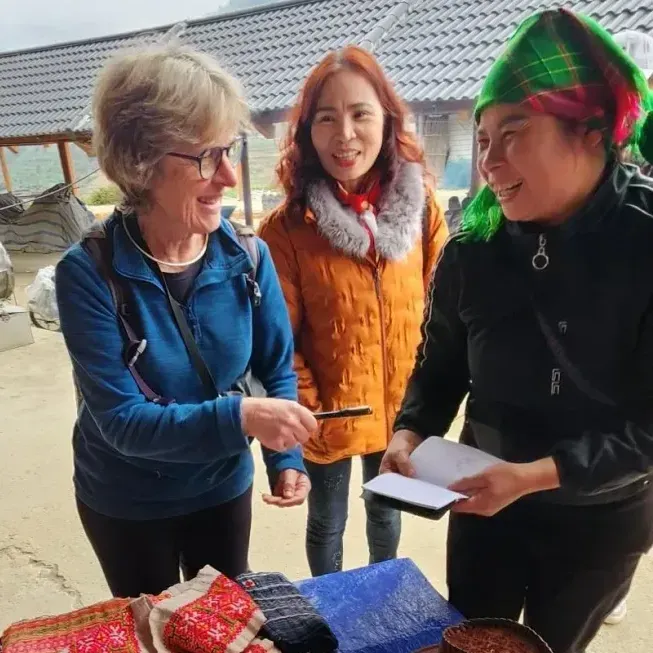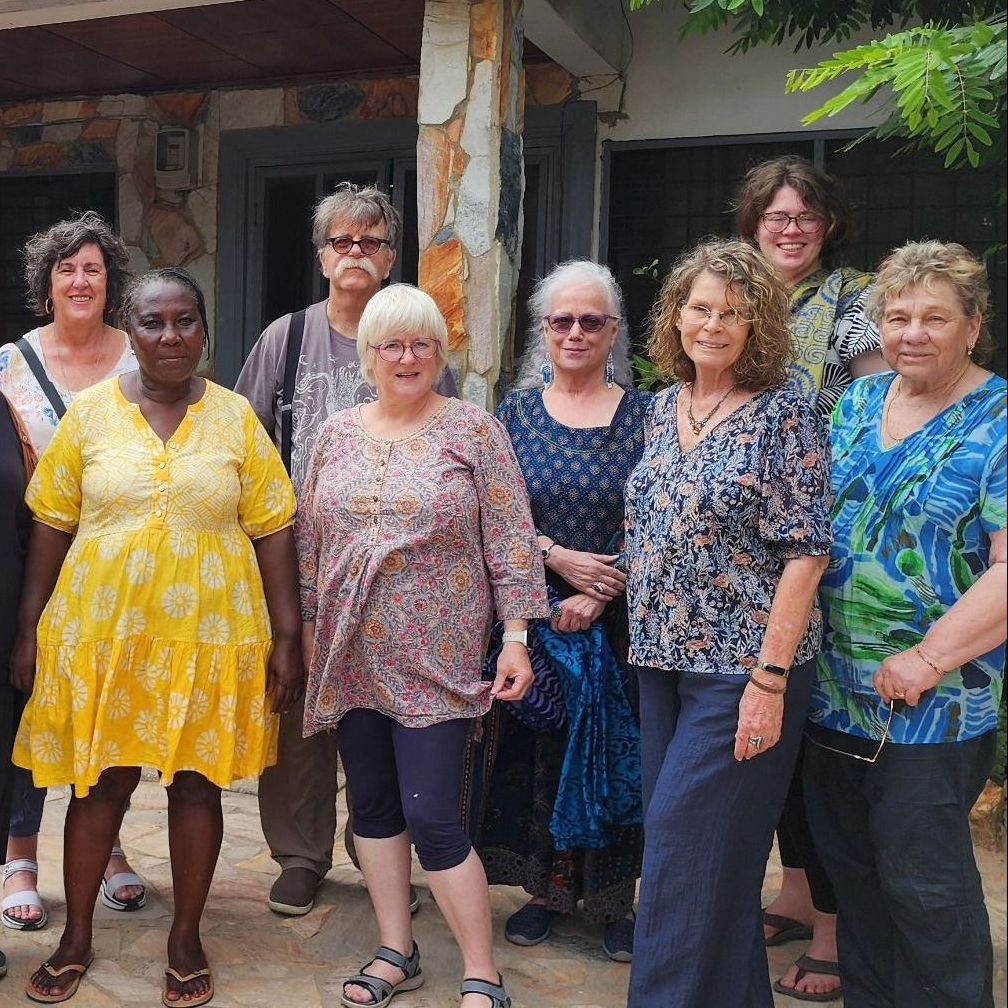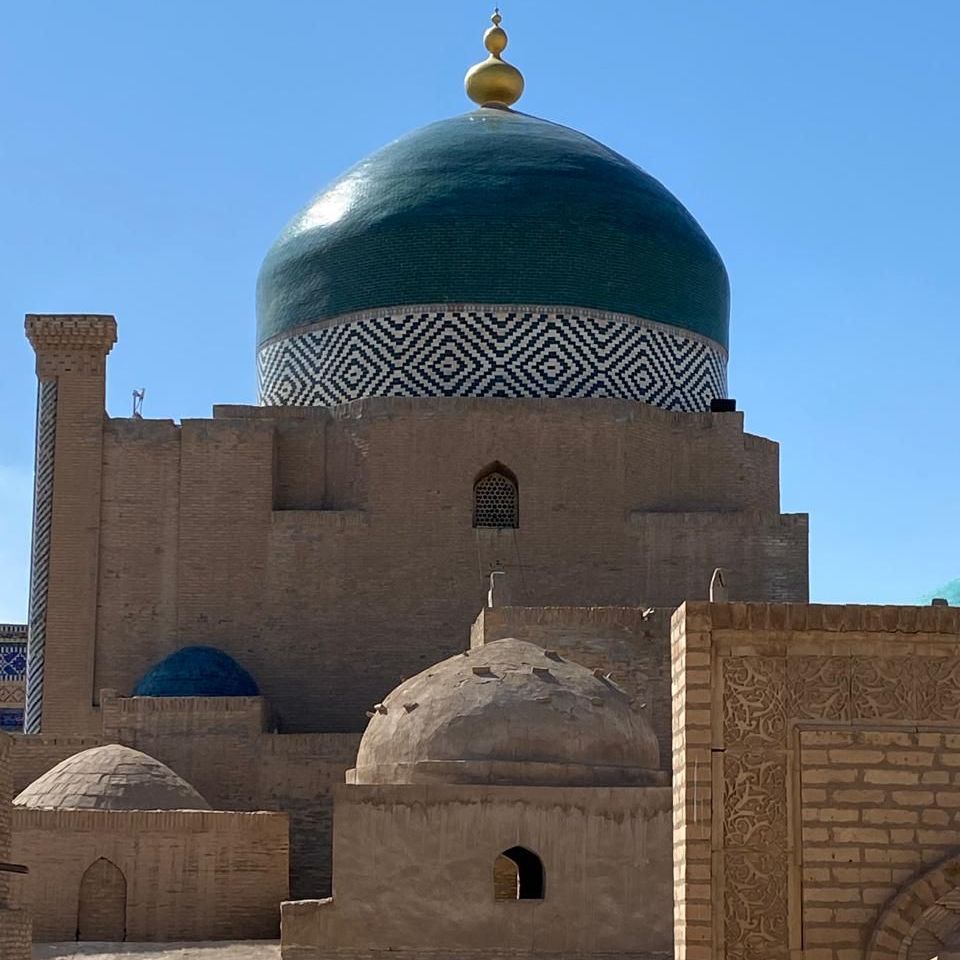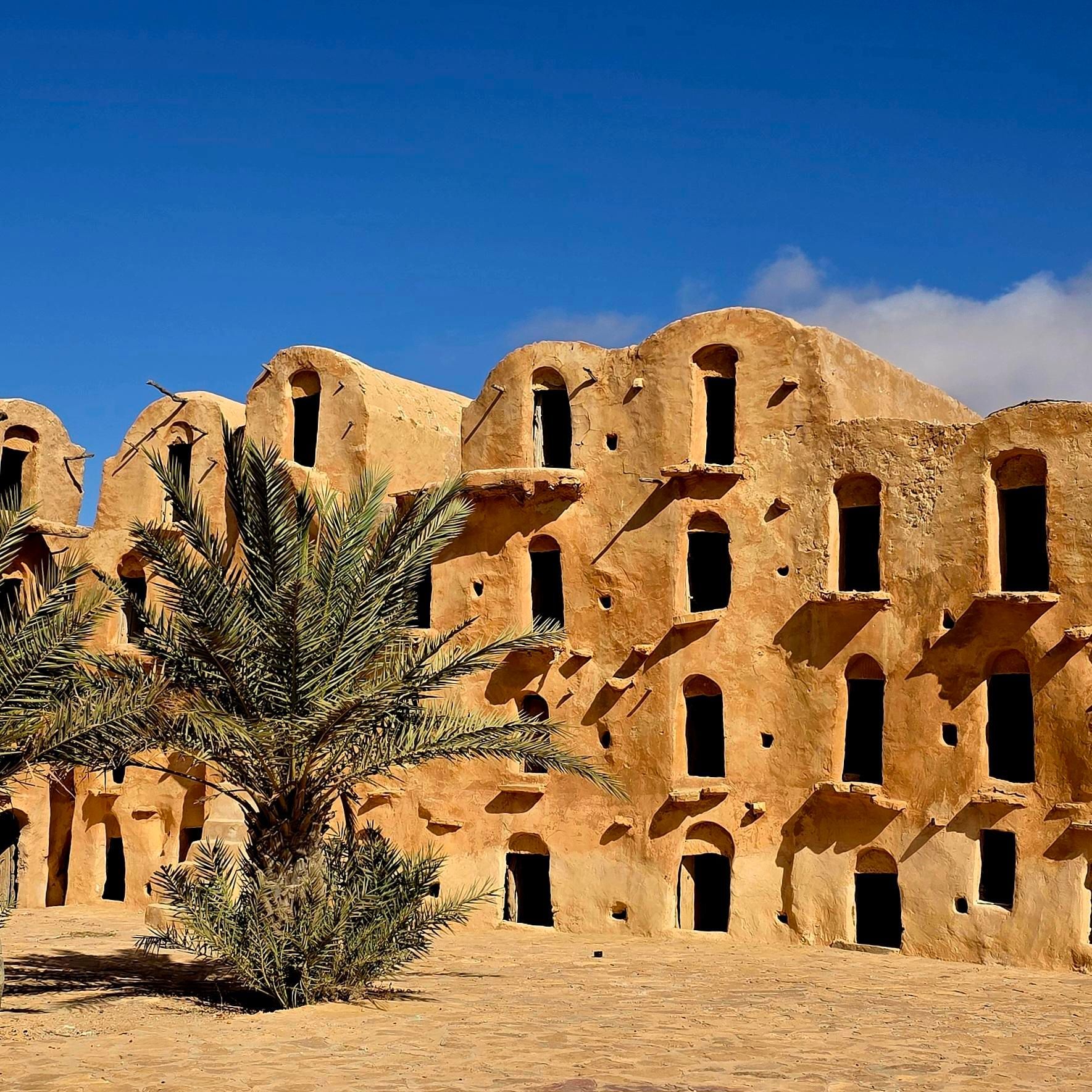
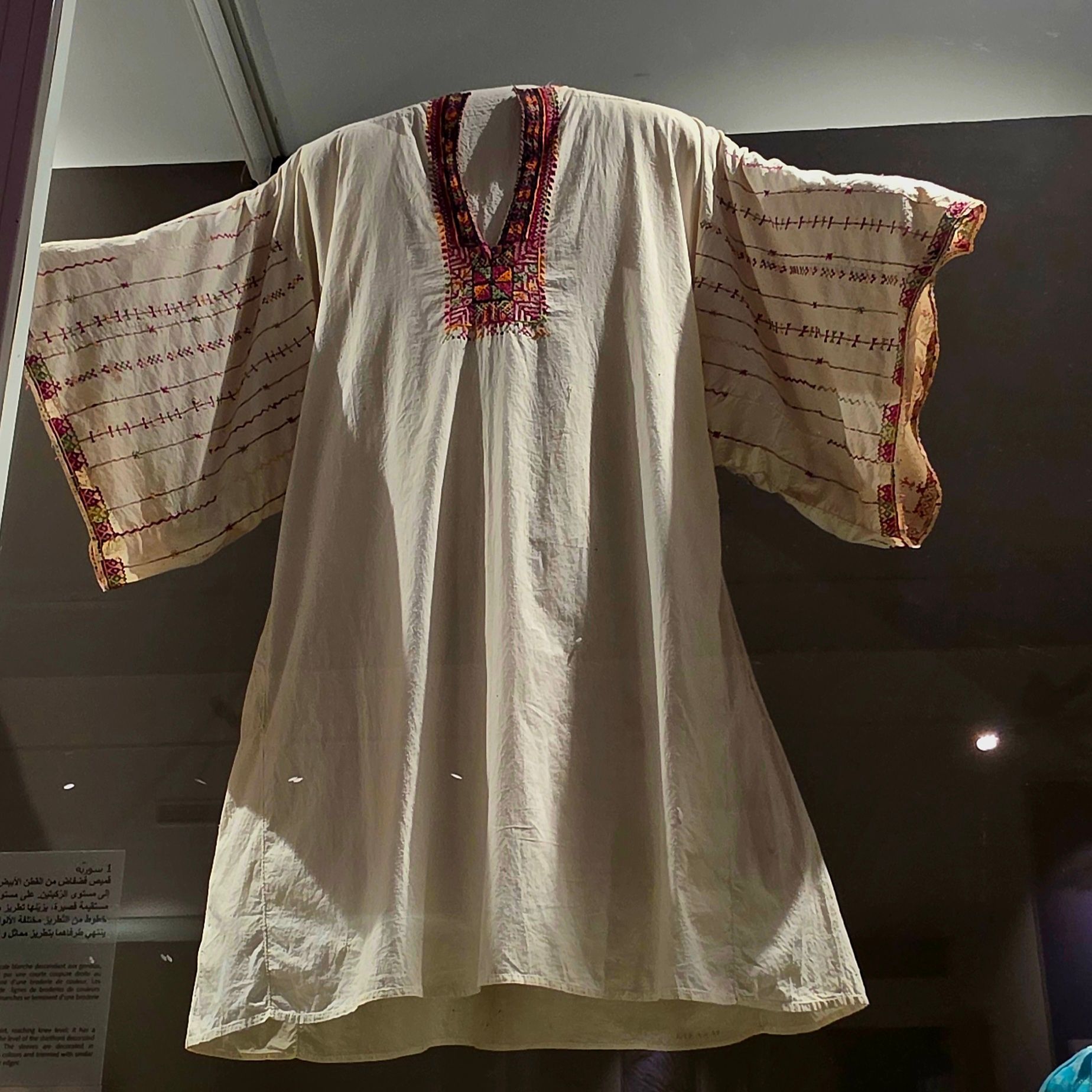
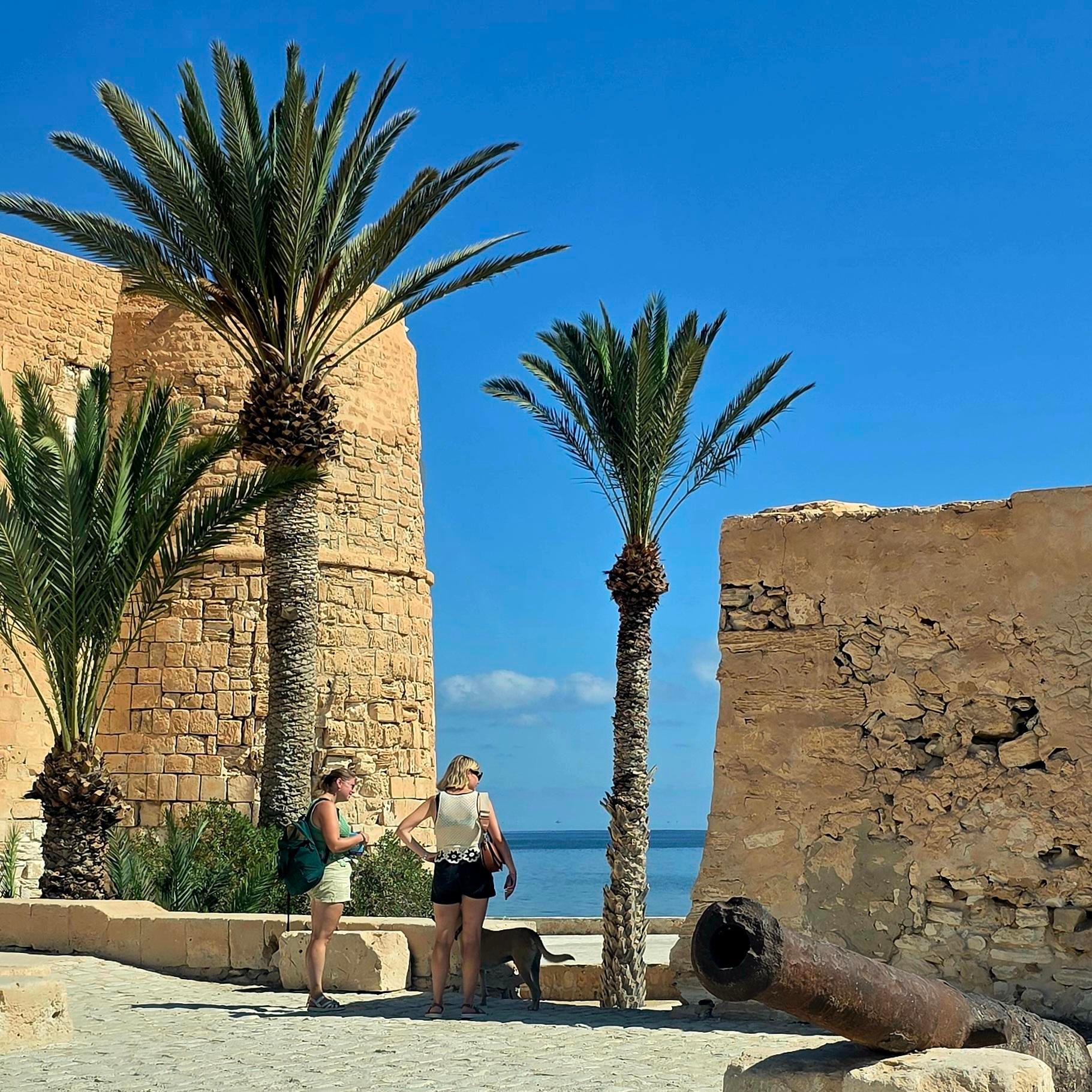
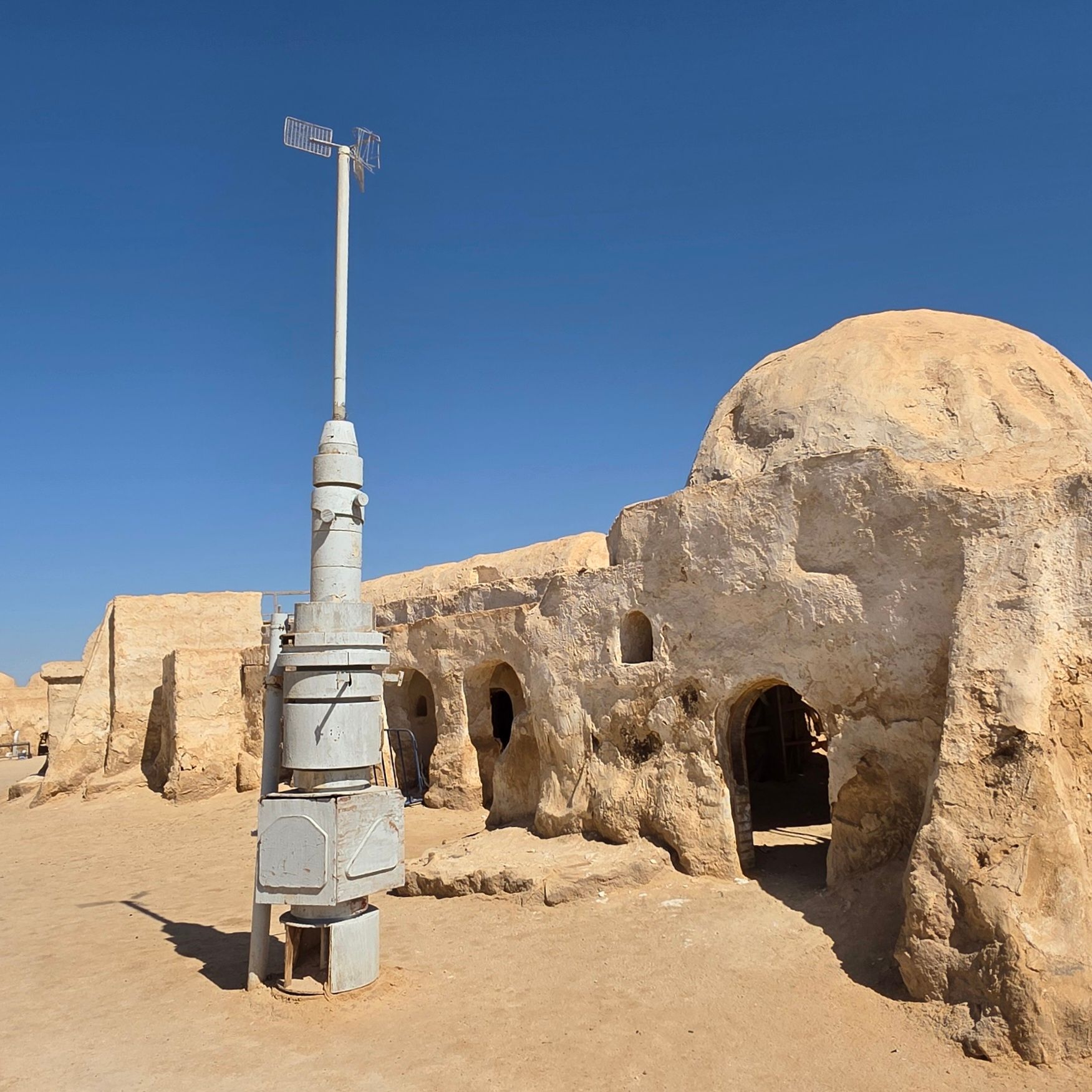
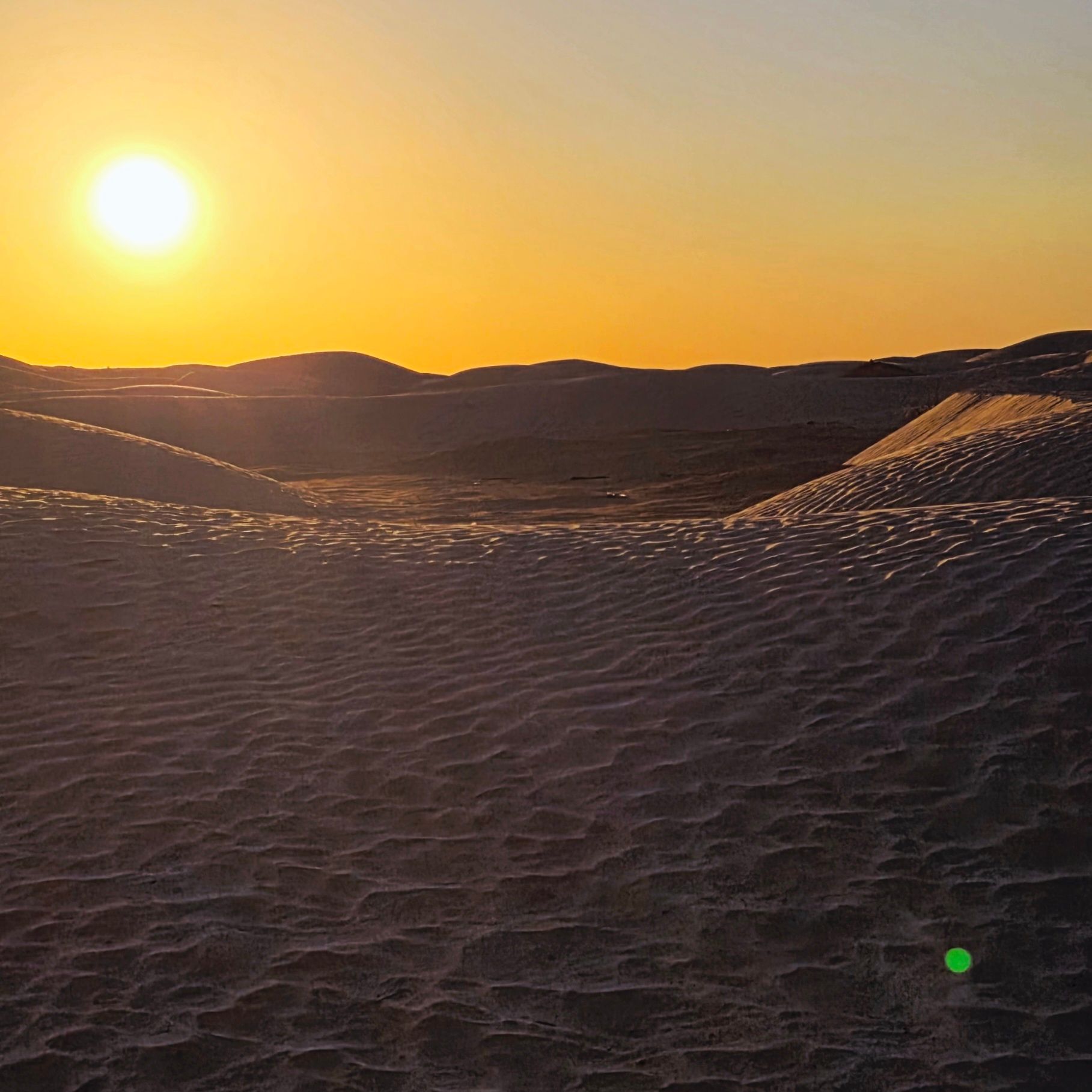
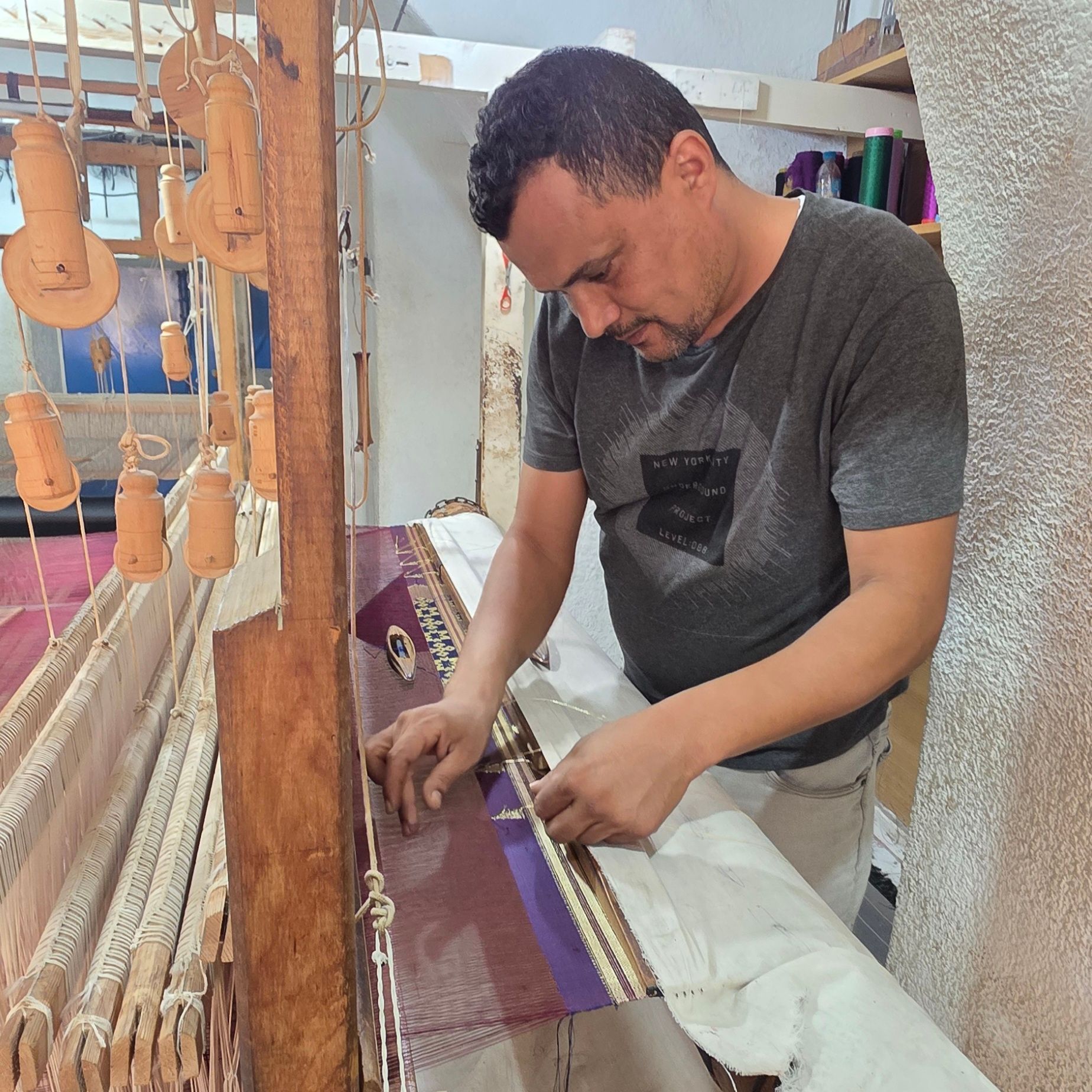
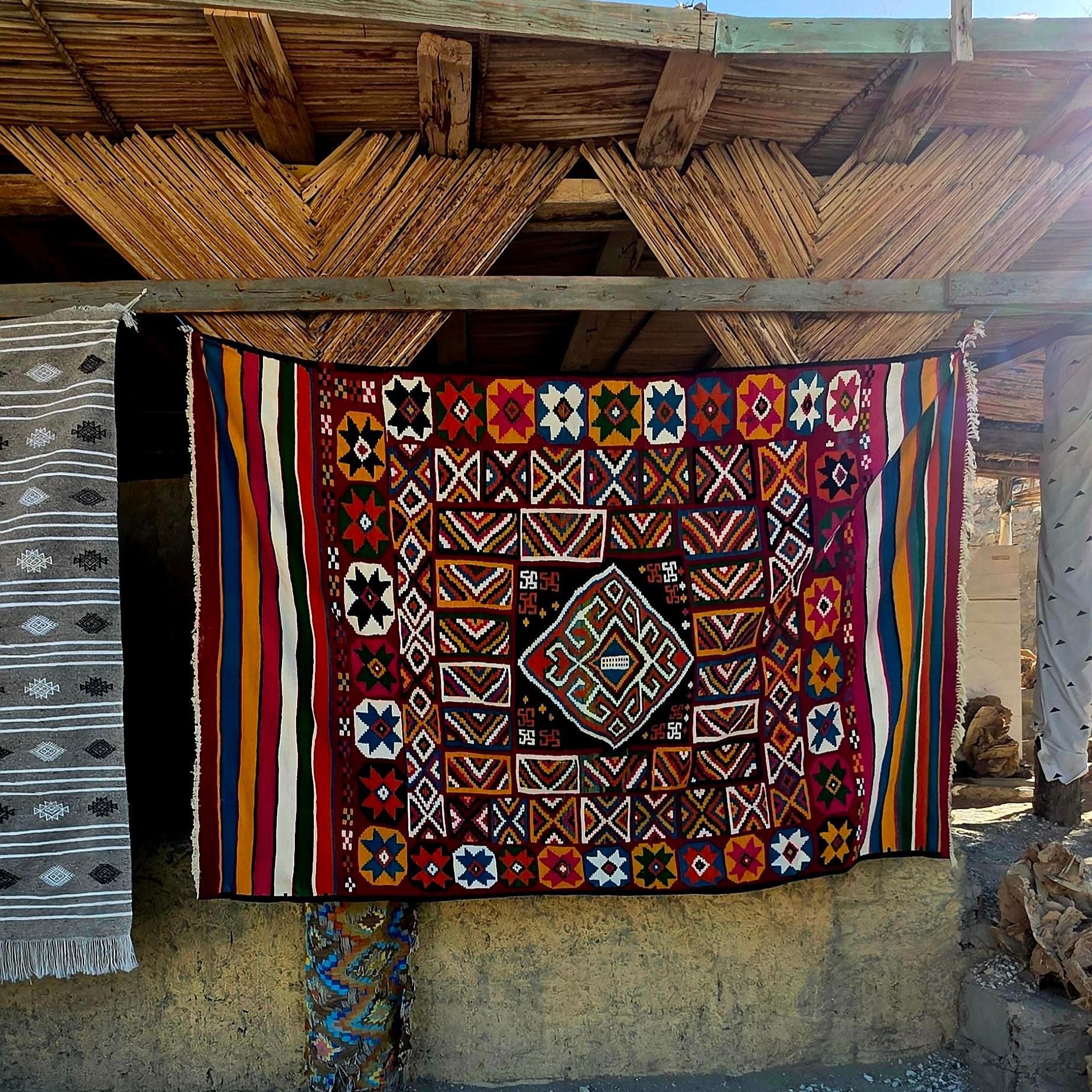
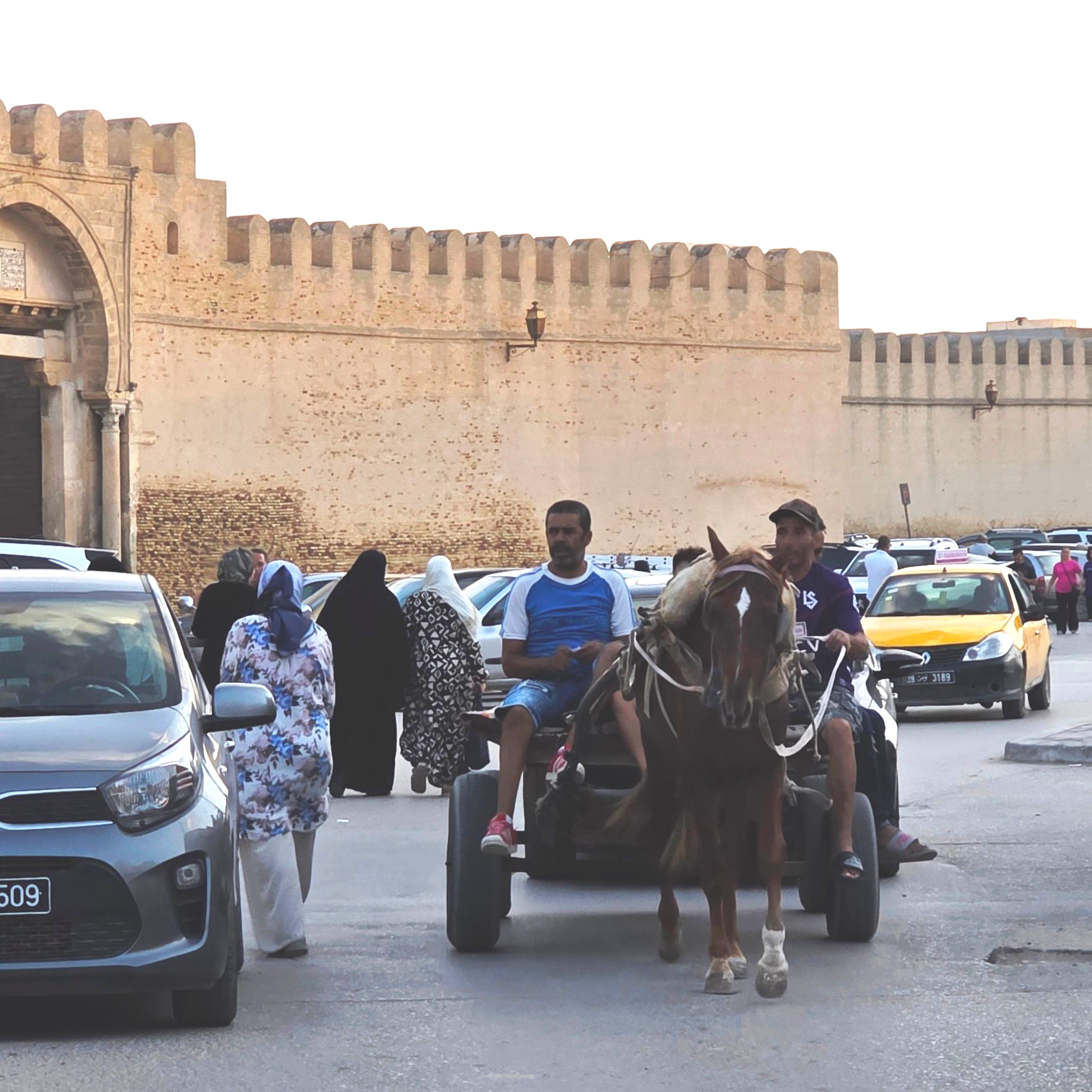
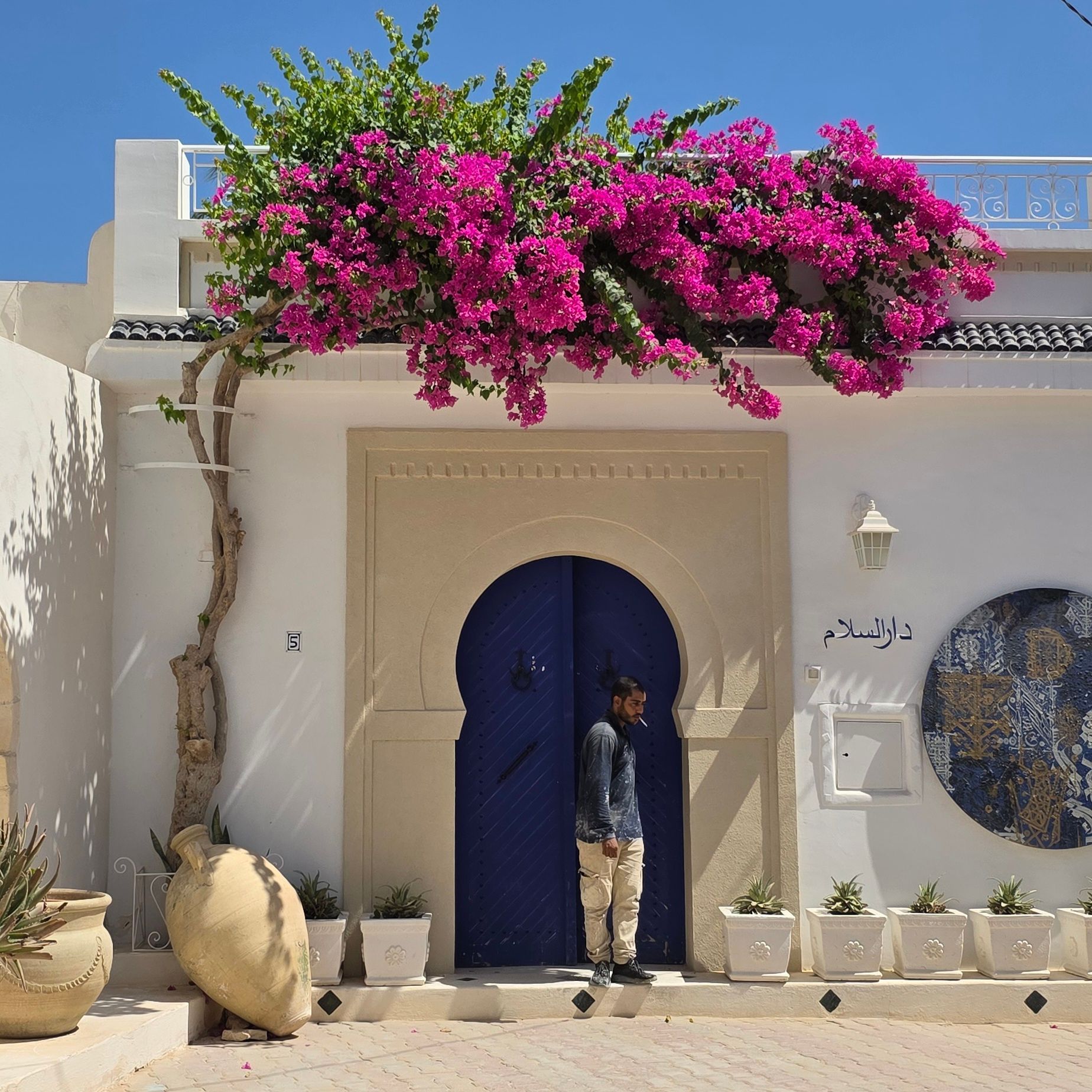
Tunisia - Crafts, Ancient Civilisations & Star Wars
Explore Tunisia’s crafts and enjoy a fabulous journey through sites real and imagined - from ancient civilisations to iconic Star Wars locations.
18 Sept - 1 Oct 2026
From
Duration
14 days /13 nights
Discover Tunisia’s rich traditions and layered history on a journey that blends the real with the imagined.
From ancient civilisations that rose and fell across this land, to timeless deserts and endless olive groves, Tunisia holds stories at every turn.
Add in the magic of Star Wars filming locations, vibrant crafts, and stunning Mediterranean beaches – and you have an extraordinary places to discover.
Day 1 - Tunis, Tunisia (18 Sept 2026)
Arrive to Tunis - Carthage International Airport
NOTE we will collect you from the airport whatever time you arrive - day or night.
There is no programme on Arrivals Day - our guests come from all over the world.
Day 2 - Tunis (19 Sept )
Carthage was founded by Phoenician settlers from the city of Tyre around 814 BC. The city's name in its native Punic language was Qart-Ḥadašt, meaning "New City".
While legend attributes the founding to Queen Dido, archaeological evidence confirms Phoenician traders established the city in the latter half of the 9th century BC.
In the myth, Dido asked for land from a local tribe, which told her that she could get as much land as an oxhide could cover. She cut the oxhide into strips and laid out the perimeter of the new city.
The ancient city was destroyed in the nearly three year siege of Carthage by the Roman Republic during the Third Punic War in 146 BC. It was re-developed a century later as Roman Carthage, which became the major city of the Roman Empire in the province of Africa.
Much of what we see is Roman upcycling of Phoenician buildings when Carthage was rebuilt by the Romans.
The Salammbo Tophet at Carthage is the oldest Punic place of worship in Tunisia, dedicated to Baal and Tanit.
Thought to be a sacrificial site to the Gods, walking around in this place is like travelling back to 700BC .
Not much to see but is the site of where the Phoenician Ports of Ancient Carthage were located - but the scale of these hand dug ports is astounding. Let your imagination run free and see them full of warships - up to 220 ships - and cargo vessels - this is what made Ancient Carthage such a strong force in the Mediterranean.
Baths of Antoninus - Built in the 2nd century, this large Roman Thermae or Baths They were one of the largest ancient Roman bath complexes and the largest in North Africa, where the rich came to socialise.
We will head into the Old Medina today, first stop will be lunch in a fabulous restored Fondouk in the Perfumers Section.
Then time to explore the Medina, so many quaint little alleyways to discover.
Find somewhere to have lunch and we will meet up to head into Tunis and visit the Old Medina in the afternoon.
We will share a Welcome Dinner at a traditional Tunisian Restaurant tonight
Inc B,D
Day 3 - Tunis (20 Sept )
Bardo National Museum
The Bardo National Museum houses one of the world’s largest collections of Roman mosaics. It is regarded as one of the most important museums in the Mediterranean region and is the second largest museum in Africa after Cairo’s Egyptian Museum.
Its collections trace the history of Tunisia across millennia and civilizations, showcasing a remarkable range of archaeological treasures.
First proposed in the 1860s by Muhammad Khaznadar, son of Tunisia’s Prime Minister, the museum has been housed in a former beylical palace since 1888.
It is worth taking your time here, go and take a break and a cup of mint tea and then dive in again - it is a fascinating place.
Sidi Bou Said is a quaint little village overlooking the sea.
We'll visit Dar El Annabi - a traditional house and museum, then take time to wander and soak up the view.
Find somewhere to have lunch and we will meet up to head onto our glass blowing workshop at a contemporary atelier working in glass.
Bring a book or your journal, it will be a relaxed afternoon taking turns to work with the glass masters and producing our own small treasures.
inc B, L
Day 4 - Kairouan (21 Sept )
We are leaving Tunis and heading towards the desert today.
Few places in Tunisia reflect religious coexistence as vividly as Testour. Founded by Muslims and Jews fleeing persecution in 17th-century Spain, the town’s monuments carry traces of the diverse faiths that shaped its history.
The Great Mosque, built with Roman stones and Andalusian arches, is a striking symbol of this blend. Its roof is uniquely decorated, and its minaret combines Islamic styles with a Star of David in tribute to the Jewish community that helped build the city.
Most famous is its clock tower, where the numbers are set backward and the clock runs counterclockwise—one of only four such clocks in the world, and the only one on a mosque. Restored in 2014, The Testour clock is unique in that its numbers face the centre and runs counterclockwise. Some say it was crafted this way to have the numbers point west and remind locals of their heritage. Others say it was set backward to express their wish to go back in time to the days of Andalusia.
Dougga is Roman settlement near present-day Téboursouk in northern Tunisia. The current archaeological site covers 75 hectares. UNESCO qualified Dougga as a World Heritage Site in 1997, believing that it represents "the best-preserved Roman small town in North Africa"
Atmospheric place to explore.
Kairouan is a city in northern Tunisia’s inland desert. It became a powerful trading hub and center of Islamic scholarship in the 9th century, when Aghlabid emirs ruled Kairouan and built many of its monuments. The Great Mosque, on the edge of the medina, with its antique columns and imposing minaret, dates from this period and is a major pilgrimage site. For Muslims, 7 trips here are said to equal one hajj to Mecca.
It's peaceful Medina is fun to explore, it is famous for its carpets - and wait until you see the house a fine collection are lodged in.
inc B,L,D
Day 5 -Tozeur (22 Sept)
We will start the day with a wander in the Medina and a visit to a sweet maker.
Makroudh are delicious date filled treats, that are famous in Kairouan. We will visit a bakery and take a class to learn how to make some ourselves - of course there will be supplies to take with us!
On the road past endless olive groves, we will pull into Gafsa to check out the beautiful blue waters of the Roman Bath and take lunch.
Tunisia is a major global producer of olives and olive oil, with the crop forming a vital part of the country's economy and cultural heritage. The olive tree has deep historical roots in Tunisia, and the harvesting season typically runs from November to February, often involving traditional hand-picking methods. Key olive varieties include the Chemlali, prevalent in the south, and the Chetoui, in the north, known for their distinct flavors. Tunisia is a leading exporter of olive oil, although much of it is exported as bulk oil rather than under Tunisian brands, limiting brand recognition for its high-quality, often organically produced oils.
There is a nice pool waiting for us this afternoon.
inc B,L,D
Day 6 - Tozeur (23 Sept)
We will pile into 4x4s this morning for a Desert Excursion.
We will visit beautiful Oasis tucked into the Atlas Mountains, then across the desert sand dunes to a Galaxy far, far away and a Star Wars Set.
Travelling back through time and space we will have lunch in Tozeur and then visit the fascinating Dar Cherait Museum.
Perhaps and afternoon dip and then later in the afternoon we will take a horse and cart to explore the gardens of the Oasis - many fruits and vegetables grow under the shade of the date palms- a magic spot and such a contrast to the surrounding desert.
inc B,L
Day 7 - Douz (24 Sept)
A slow start then heading to Douz, the Gateway to the Sahara.
If we are lucky we might catch a bit of the weekly market- sheep, vegetables and second hand clothes mostly.
Towards the end of the day lets mount our camels or hop into a horse and cart and head out into the Sahara Sands to watch the sunset.
inc B,L,D
Day 8 - Douiret (25 Sept)
The extreme heat and soft sandstone mountains has lead to a unique architecture traditions. There are still a lot of cave-dwelling communities like those in Matmata, Tunisia, characterized by Ingenious underground architecture designed for natural air conditioning and protection from the elements, and strong community ties.
We will visit a family and experience their hospitality, then go onto The Hotel Sidi Driss in Matmata, built in the traditional troglodyte style, was used as Luke Skywalker's childhood home in the original Star Wars film.
The Seven Sleepers is a legend shared in both Christian and Islamic traditions. There are a few locations across the world that link to the story - an important one here in Tunisia.
The Mosque of the Seven Sleepers
The Legend of the Seven Sleepers
The core of the story involves a group of young men who fled persecution for their faith by hiding in a cave. They fell into a miraculous sleep, with a dog guarding the entrance. According to the Quran, they slept for 309 lunar years and were guarded by a dog, whose name is traditionally given as Qitmir. When they woke, they found the world had changed, and they eventually died and were buried.
Along the way we will visit a carpet weaving group, they have been experimenting with Rosemary for colour for a lovely grey/green colour.
Tonight is special - we are staying in what was an abandoned Berber Village perched on a mountain top.
An enterprising group of locals have renovated a section and turned it into a cosy Gîte. Accommodation is simple, comfortable rooms tucked into the mountain and great home cooked meals. Note- some rooms have an ensuite bathroom - other are shared; we will allocate rooms by lottery. All have power and are comfortable.
The Berber Village of Douiret has existed 'forever'. They built a Fortified Grainery or Ksour in the 10 or 11 Century to protect their crops from invaders.
People lived on this mountain top until the 80's, the last family moved out in 2008 and now a new lease of life as a Homestay.
It is fabulous to explore, find the old olive presses and storage rooms and watch the sunset.
inc B,L,D
Day 9 - Djerba (26 Sept)
We are heading to the Island of Djerba via Ksar Ouled Soltane.
It is a fortified granary, or ksar, located in the Tataouine district in southern Tunisia. The ksar is spread out over two courtyards, each of which has a perimeter of multi-story vaulted granary cellars, or ghorfas. Like other ksour (plural of ksar) built by Berber communities Ksar Ouled Soltane, is located on a hilltop, to help protect it from raiding parties in previous centuries.
Ksar Ouled Soltane is now a tourist destination, with visitors coming to see its well-preserved granary vaults.
It was featured in the film Star Wars: Episode I – The Phantom Menace in some of the scenes used to represent the slave quarters of Mos Espa, where the character Anakin Skywalker lived as a boy.
Djerba Island has featured in many stories and movies and civilizations.
It is supposed to be The Land of the Lotus Eaters where Ulysses was nearly trapped on his Odessy.
Inhabited since Antiquity by Amazigh- the original People of the Maghreb, the Phoenicians, Greeks, Romans, Byzantines, Egyptians, Araba, Ottomans, Spanish and French have all tried to take it and hold it.
According to their oral history, the Jewish minority has dwelled on the island continuously for more than 2,500 years, following the destruction of the Temple of Jerusalem.
I remember pirate movies as a kid where Barbarossa was the villian, he was a valued leader of the Ottoman Navy - it all depends on who is telling that story.
Pottery on Djerba has a 4000 year history, dig down and the desert island produces great clay.
We will visit the Guellala Museum after crossing the Roman Bridge onto the Island, check out their great displays about local culture before a locally cooked fresh fish lunch [other options too]
Home for the next few days is a lovely hotel built in a converted caravanserai in the Medina of Houmt Souk.
The wedding market is a treasure trove of local weavers and shops selling all the decorations needed by a bride, a great place to explore.
inc B,L,D
Day 10 - Djerba (27 Sept)
The Island is famous for its pristine beaches, let's head down to the sea for an early dip, come back shower and go exploring.
Pirates Ahoy! The Borj El Kebir was renovated in the late 14th Century, like many locations in Tunisia it is the site of ongoing archaeological scrutiny.
The mighty Ottoman seafarer Barbarossa made it his base in 1503. He was infamously known for raiding European ships in the Mediterranean.
Djerba Traditional Heritage Museum, Tunisia has some fine museums and it is hard to choose between them but this one is definitely a beauty - fabulous displays and costume section.
Later in the day we will visit Djerbahood. It is a large-scale, open-air street art museum located in Erriadh, a village on the island of Djerba, Tunisia, which was created in 2014 by the Itinerrance de Paris gallery, bringing artists from around the world to transform the traditional medina with over 250 murals and stencils.
Great to wander around, there are also a few arty little shops to brouse as well.
inc B
Day 11 - Sousse (28 Sept)
Leaving via the Ferry back to the mainland.
First stop El Jem. The amphitheatre was built around 238 AD.
It is one of the best preserved Roman stone ruins in the world, and is unique in Africa. As other amphitheatres in the Roman Empire, it was built for spectator events, and it is one of the biggest amphitheatres in the world. The estimated capacity is 35,000.
El Jem seems to be in the middle of nowhere surrounded by desert and olive groves. The olives is where the area derived its wealth, such that citizens could build 2 amphitheatres for local amusements. Only one is left today and is in fine order and fascinating to explore.
There is also a small mosaic museum - the wealth of El Jem lead to a fine school of mosaic art - and this is where it started.
inc B,L
Day 12 - Sousse (29 Sept)
First lets take a stroll through the Medina to the Museum Dar Essid - this is a rich merchants house - extraordinary insight into how the rich showed their wealth.
Then wander the medina to see what's happening.
Experience the beach, this is what Tunisia is famous for along with its history.
inc B
Day 13 - Tunis (30 Sept)
On our way to Tunis, we will pull into Hammamet and visit a Mosaic Studio, we've seen so much great mosaic it is time to have a go ourselves.
You will make a small Mosaic panel to take home with you, a memory of Tunisia.
Once back in Tunis, settle inj you have time for a last exploration into the Medina before we meet up and have dinner in a fabulous family run restaurant - fine dining with Tunisian flavours.
B,D
Day 14 - Departures (1 Oct 2026)
Departures from Tunis - Carthage International Airport
We'll drop you to your flight any time night or day.
inc B
Fitness
Physical Fitness for Sightseeing
This adventure is crafted for enthusiastic, active travellers with a good general level of health and mobility.
To make the most of your experience, you’ll need to be comfortable walking for 3–4 hours a day — sometimes over uneven ground, up hills, and climbing a few flights of stairs.
You may also find yourself getting in and out of local transport and navigating the occasional over-the-bath shower.
If you enjoy a bit of daily movement and love discovering new places on foot, you’ll thrive on this tour.
Just a friendly heads-up: we need to walk at an average pace - it will not be suitable for those who prefer a slow pace or need frequent rest stops.
Group Size
8 - 14
Booking Status
Bookings Open
Tour Location
Tunisia
Tour Information
Tour Pricing
- Share with a Friend: AUD $7190 each when booking two places at the same time, twin or double room share.
[AUD $7190 = approx USD$4760]
- Mention if you are happy to share if someone is looking for a roommate.
- Private Room: Add AUD $990
- Deposit: AUD $2880 due today secures your place.
- Early Bird Bonus: Book by 18 Feb 2026 to receive a AUD $200 rebate.
- Triple Treat Bonus? Every 3rd trip earn AUD $300 discount and our appreciation.
Destination Notes-
to help you prepare.
Inspirational Reading List.
Inclusions
Expert instruction by local artisans
Solo Traveller friendly
Well-chosen accommodation
Fully hosted by our CAS teams with local guides
Carefully curated itinerary
Airport pick up & drop off
All breakfast and most other meals
Exclusions
Flights
Visa, if needed
Travel insurance
Laundry
Gratuities

